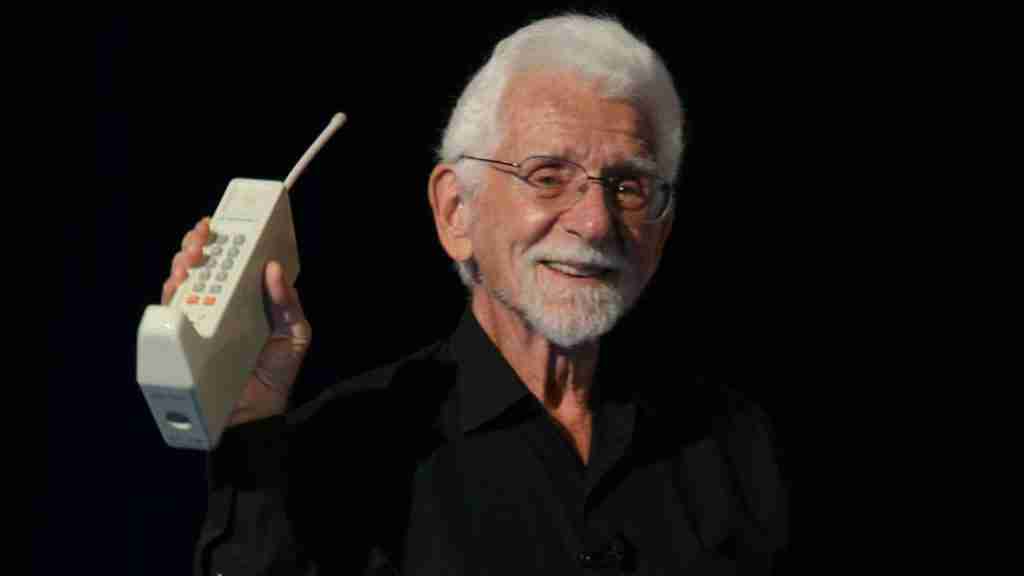Who Invented the First Cell Phone? Dr. Martin Cooper’s Complete Story
Imagine stepping onto Sixth Avenue in New York City on April 3, 1973. You might have witnessed a moment that would change human communication forever: Dr. Martin Cooper, holding what looked like a large beige brick, making the world’s first mobile phone call. But who is the man behind this revolutionary invention, and what drove him to create something we now can’t imagine living without?
The Early Years: Building the Foundation
Born on December 26, 1928, in Chicago, Martin Cooper’s journey to becoming the “father of the cell phone” began long before that historic call. After serving in the U.S. Navy during World War II, Cooper earned his electrical engineering degree from the Illinois Institute of Technology in 1950. Little did he know that his education would lay the groundwork for a communication revolution.
The Motorola Years: Where Innovation Met Opportunity
When Cooper joined Motorola in 1954, the company was already a leader in radio communication technology. But Cooper had a bigger vision: he wanted to make personal communication truly portable. His team’s first major achievement came with developing portable handheld police radios, revolutionizing law enforcement communication.
The Race to Build the First Cell Phone
In the early 1970s, AT&T’s Bell Labs was focusing on car phones, but Cooper had a different idea. He believed phones should be so personal that they’re “attached to people, not places.” This philosophy drove him to challenge his team at Motorola to create something unprecedented.
The Historic First Call
That April morning in 1973, Cooper made the first public demonstration of a handheld cellular phone. In a moment of competitive spirit and perhaps a touch of irony, he called his rival at Bell Labs, Joel Engel:
“Joel, this is Marty. I’m calling you from a cell phone, a real handheld portable cell phone.”
The device he used:
- Weighed 2.4 pounds
- Measured 9 x 5 x 1.75 inches
- Offered 30 minutes of talk time
- Required 10 hours to recharge
- Could store up to 30 phone numbers
Beyond the First Call: Cooper’s Continued Impact
Cooper’s influence didn’t stop with the first call.
He continued to shape the mobile industry through:
Cooper’s Law
Named after him, this law observes that the number of voice conversations or data transactions that can be conducted over a given area doubles every 30 months.
Modern Innovations
Cooper has remained active in the mobile industry, founding several companies and continuing to innovate in wireless technology. His insights about the future of mobile communication have proven remarkably accurate.
Cooper’s Vision for the Future
Even today, Cooper continues to share his vision for mobile technology. He believes:
- Phones will eventually be implantable
- Battery life remains the biggest challenge
- Technology should adapt to humans, not vice versa
- Privacy and security are crucial concerns
Awards and Recognition
Cooper’s contributions have earned him numerous accolades:
- Inducted into the National Academy of Engineering (1980)
- Received the Charles Stark Draper Prize (2013)
- Awarded the Marconi Prize (2013)
- Given the IEEE Centennial Medal
The Legacy Continues
Today, as billions of people carry smartphones in their pockets, Cooper’s legacy lives on. His invention has:
- Connected remote communities
- Enabled mobile commerce
- Revolutionized social interaction
- Created new industries and job opportunities
What Martin Cooper Teaches Us
Cooper’s story isn’t just about inventing the cell phone; it’s about perseverance, vision, and believing in ideas that others might dismiss as impossible. His journey reminds us that the greatest innovations often come from challenging conventional wisdom and thinking about how technology can better serve human needs.
Looking at your smartphone today, it’s fascinating to think that it all started with one man’s desire to make communication truly personal and portable. As Cooper himself often says, “The cell phone is a testimony to human ingenuity and our real needs.”






